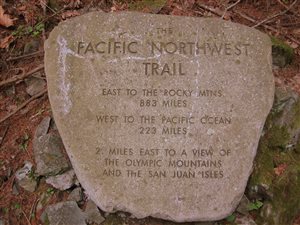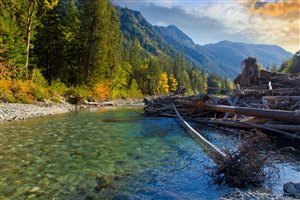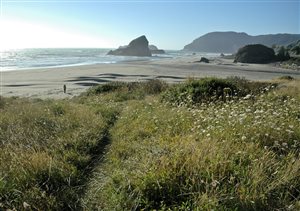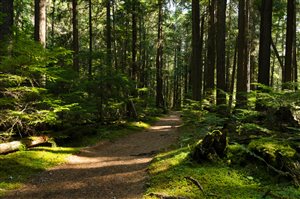Facts and Statistics

This trail travels through remote, rugged wilderness and main streets in some small communities. In some areas, it is characterized by hundreds of people, while others are only navigated by a handful of hikers. Some people will only travel a few miles. However, if you want to experience the full scenic feel, then plan to cover the entire trail.
History

Route Description
The official start of this trail is the Chief Mountain Customs found on the US-Canadian border in Glacier National Park. The trail passes through the valleys and high mountains of Glacier National Park, travelling through the Flathead River, across the Whitefish divide, traversing through Ten Lakes Scenic Area. The trail then cuts across Lake Koocanusa, before finding its way through the Yaak River, descending to the Moyie River to the Northeast side of Idaho.

The Idaho wilderness experiences minimal traffic, apart from the handful of hunters who visit the area. However, you can still identify few camping spots for backpackers. Areas such as Ball Lakes have been known to attract huge crowds of hikers during the summer heat.

The trail then begins ascending Pasayten wilderness. These are some of the most remote areas in the Lower 48 areas of the US. The Pasayten wilderness is in the northern cascades of this trail. Large parts of this section are very challenging to access, considering they pass through a wilderness that is rarely explored. The Pasayten section is around 25 miles characterized by a roadless wilderness. You will come across the Boundary trail number 533 that provides spectactular walking at over elevations of more than 7,000 feet. Beware though, you’ve gotta be wearing quality walking shoes to get the most out of it. Sections of lush river valleys and dips make it even more exciting.
The trail then cuts through the Mt Baker Wilderness, then state, private and federal woodlands before reaching Puget Sound. Through the farmlands and along the dikes Skagit County, the PNT crosses Fidalgo Island. This is the section at Deception Pass State Park. It will then lead you to the Washington state ferry. This is the only ferry crossing in the entire National Trails System. This makes the trail unique and different from the other trails.

The trail then leaves the park, travelling along Bogachiel River. It then enters the Hoh Rain Forest from the northern end, to the mouth of the Hoh River. The trail takes a northern direction wandering along the pacific coast and then enters the Quileute Indian Reservation. It takes a western turn, before arriving at Cape Alava.
Logistics

If you are wondering where you can eat, small stores, and gas stations offer a wide variety of foods to choose from. You can opt for Granola bars, fritos or even peanuts. Snickers are a favourite among hikers. Do not overstock your food supplies. The heavier your bag, the less ground you will be able to cover within a certain time. Only carry what you need.
Passes and Permits
You will require permits to camp at the Olympic National Park, The North Cascades National Park Complex, and the Glacier National Park. Recreation fees or passes might be needed for some Washington State Park recreation sites and trailheads. Get them in advance to make your hike as smooth as possible.
Bottom Line
The Pacific Northwest trail is beautiful, scenic and unique. It offers the hiker spectacular views, while cutting through several miles of mountains, valleys, and wilderness. Hikers also get more experience on this trail, considering the challenging nature as it passes through the wilderness.
A Sense Of Direction – The Pacific Northwest Trail
Navigation
[jbio template=”bootbomb0″]

0 comments